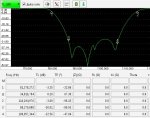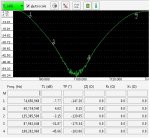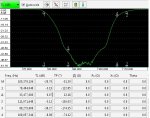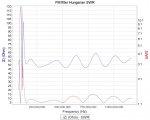I rolled some numbers on the RTL-SDR FM bandstop filter and the HPN-30118 AM/FM filter using a VNA. The results are interesting compared to the ZBSF-95+, especially when you hit VHF Air voice at 118 - 137 MHz. The ZBSF-95+ numbers come from their spec PDF as I do not own that yet. There are other things to consider with these filters of course, but if you only need one the Mini Circuits ZBSF-95+ looks good.
( That is not a typo at 119 MHz on the RTL-SDR )
( That is not a typo at 119 MHz on the RTL-SDR )
| RTL-SDR FM Bandstop $17 Freq Loss dB 50 = 0.26 75 = 1.95 88 = 47.45 95 = 54.95 107 = 59.80 119 = 11.55 125 = 3.13 144 = 0.84 150 = 0.73 600 = 0.17 | HPN-30118 AM/FM Bandstop $50 Freq Loss dB 50 = 0.49 75 = 0.68 88 = 28.06 95 = 43.8 107 = 28.17 119 = 0.70 125 = 0.90 150 = 0.76 600 = 1.40 | ZBSF-95+ Bandstop $100 Freq Loss dB 50 = 0.21 75 = 27.10 88 = 51.83 95 = 45.23 107 = 54.08 119 = 1.15 125 = 0.62 150 = 0.27 650 = 0.27 |









